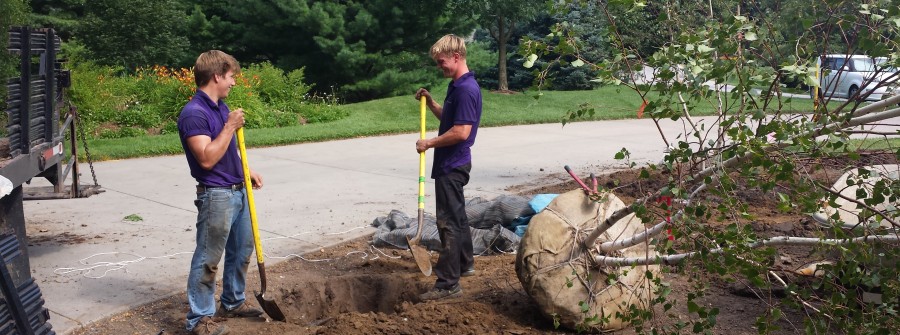
It’s a simple act, but an empowering one. A hopeful tribute to our tomorrows and a generous gesture given to a new generation. Our reverence and respect for trees honor our State’s Tree Planting Tradition.
Now, more than ever before, we need to participate in planting trees for the revitalization and diversification of our community forests. It is by far one of the most important planting efforts each of us can offer to our neighborhoods, parks, and public spaces. This call to action didn’t just start with the confirmation of Emerald Ash Borer in our city. For years, we’ve seen the decline of our tree canopy cover from a full menu of pests that have killed specific species of Pine, impacted the management practices of our Oaks and skeletonized the leaves of both Linden and Birch. Not to mention all the natural causes and human disruptions we’ve forced upon tree survival throughout the years. Even without the introduction of new pests/problems, we’ve fallen behind on cycling through with replacements to keep pace with our losses.
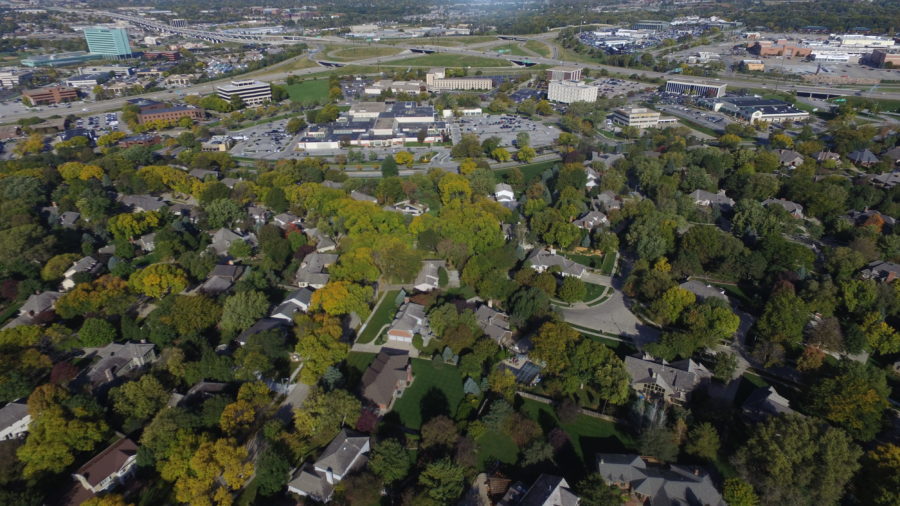
Trees perform a long list of Ecosystem Services and are significant in sheltering our sky, preserving our soil, taming our wind and enhancing our home. Our neighborhoods and landscapes need trees in all shapes, sizes, age classes and types. The more diversity we introduce the healthier Eco-System we co-create. We can all participate in a very simple way and help chart the course for canopy recovery starting with our own address.
While the following pie chart may not be 100% accurate- for the sake of discussion, let’s say our overall inventory of trees within Omaha is broken out as follows:
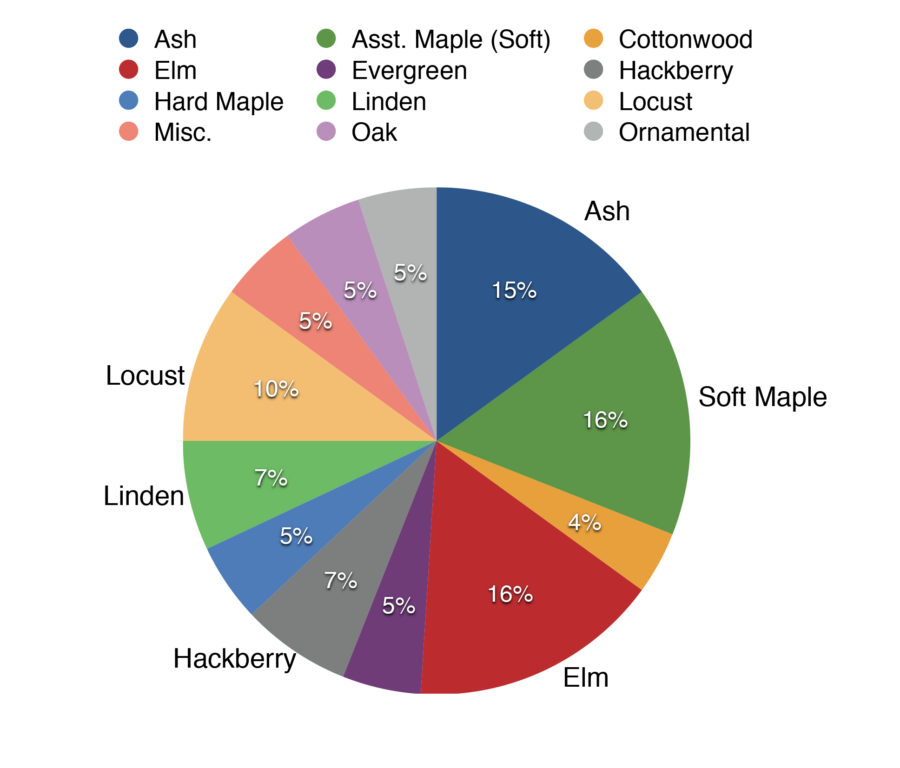
Tree Inventory-Hypothetical Graph
With this scenario, we can quickly assess we have an assortment of trees in play. The higher percentage slices, plus the Evergreen piece comprise 62% of our overall tree composition. The good news is we have been conscientious about diversification. The flip side is, within the predominant five- they are either under attack from a pest (ash, elm, evergreen), reached full maturation and suffering from decline due to age (soft maple), or currently being planted at a pace that is already 10% of the whole pie (locust).
While the previous pie chart is not definitive, it presents the point that we have a lot of opportunities ahead of us to change the direction of the overall mix of trees in our town. We can have a say in what we select and participate in a purposeful way in directing the outcome. Having a say and controlling an outcome…that’s a rarity and it doesn’t have to be a budget breaker. All one needs is a little selection & placement guidance, awareness of best practices regarding planting and a shovel. The most important tool to bring to the task is your personal willingness to care for the newly planted tree(s) until establishment.
Here comes the exciting part. Let’s talk trees and for starters offer 5 shade tree options to select from:
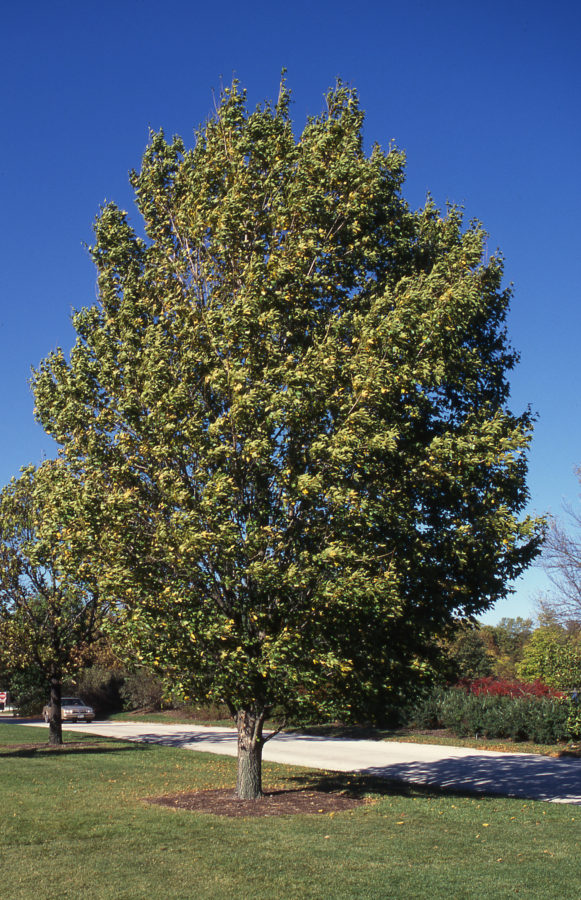
A selection we are fond of is Acer miyabei ‘Morton’ or commonly referenced as State Street Maple. Nice clean foliage in summer with clear, yellow fall color beginning in October. Considered to be upright, oval in form and an outstanding performer in both growth and hardiness. Definitely, needs to be considered in the overall mix.
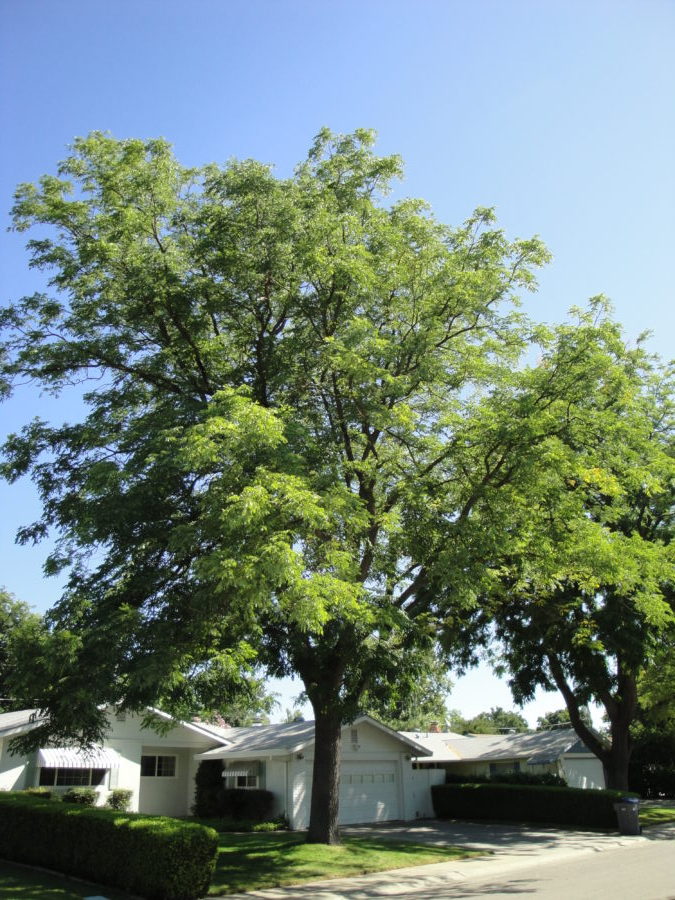
This is a tough tree and it’s fair to present the tree as being an exotic looking addition to our landscapes. The perfect tree to provide filtered shade, and the female flowers (while green in color and not overly distinctive) emit a citrus like fragrance to the evening air. It has a picturesque form and one of our most outstanding natives to select from. Yes, it has seed pods, but as a legume, it also fixates nitrogen in an ecological way to support the growth of the overall community of plants. If the pods become a “deal-breaker’ there are cultivar selections that are fruitless. Look for the male cultivar known as ‘Espresso’.
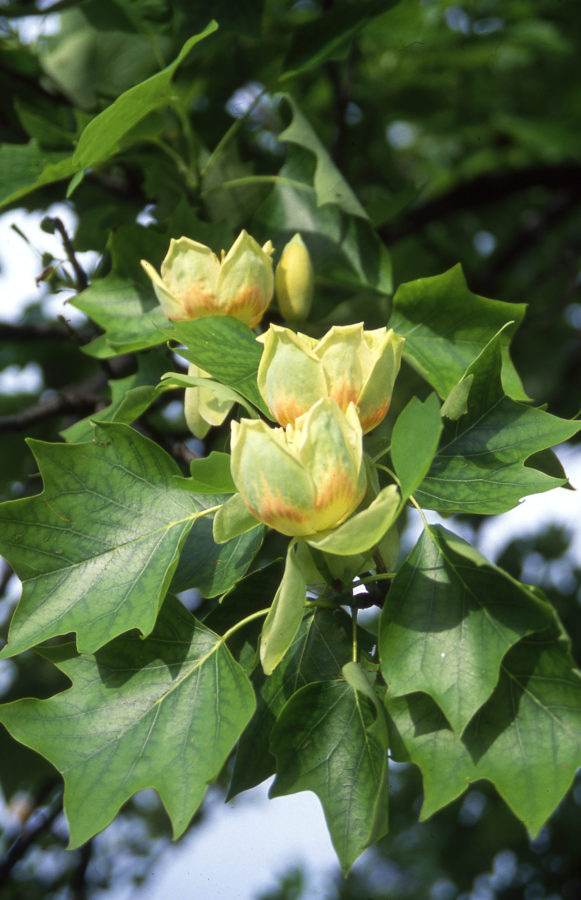
Given proper placement, this tree can become sizeable and often found to be the tallest tree within many forest settings. It likes well-drained, moist, rich soils. In dry springs and summers, supplemental irrigation will be well received. The flowers are tulip-like in appearance, yellow in color with an orange center. In fact, the leaves carry the silhouette shape of a tulip and are captivating in and of themselves. This tree needs some room to grow and significant soil volume to accommodate its growth rate. Not the kind of tree to “shoehorn” into a side yard, but given the right setting will become a signature tree for years to come. There is a cultivar that is a more compact and uniform, registered under the name of Emerald City Tulip Tree. We’ve found this introduction to be more compatible with most sites and encourage having this tree be seen more frequently within our parks and open spaces.
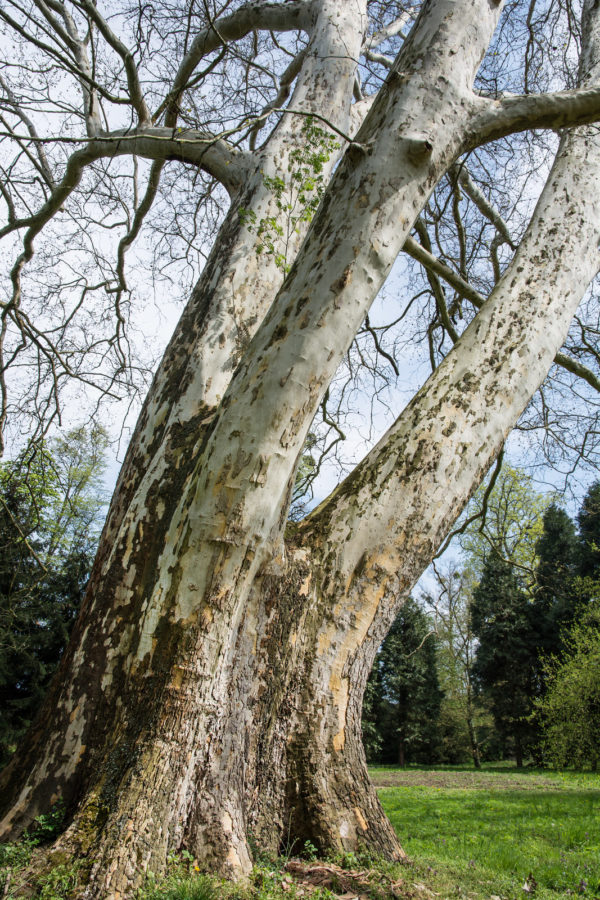
Within the past several years we’ve started to use this cultivar of Sycamore more often. Developed by Dr. George Ware from the Morton Arboretum, this cultivar has naturally bred resistance to anthracnose (a common disease within the Genus). In addition, it has a more uniform form and strong leader. One of the highlights of Sycamore is the outstanding bark with contrasting creamy white inner layers with sporadic gray plates of outer bark. It is stunning to see the bark on a crisp winter day against a backdrop of blue sky.
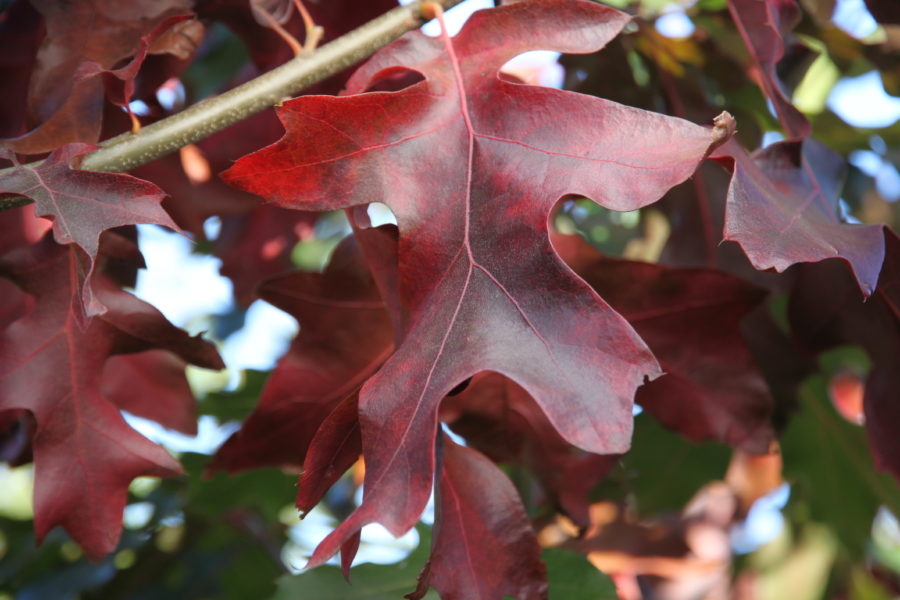
This is a Genus of plants that we certainly need to boost within our overall inventory. An underused consideration is Quercus velutina or Black Oak. A very adaptable tree that sensibly prefers moist soils, but tolerates drought given the circumstance. An underappreciated characteristic is the early spring, velvety, red color of the immature leaves combined with the showy, yellow contrast of its catkins. A subtle announcement of spring, and possibly an acquired taste but we all can appreciate being introduced to such unexpected natural gifts. A welcome contrast to the many loud, visual disruptions of our day. The common name, Black Oak comes from the dark, deepened color the bark develops as the tree ages.
Given the above mentioned 5 trees let’s take them and intentionally plant them over a 3-year time span and see if we can impact how our urban forest tree canopy pie chart shifts. Without hiring a statistics expert to verify the data, let’s presume we can have a significant percentage shift (5-6%) for every Three Thousand Trees planted. The quantities allocated within the five could possibly be as follows:
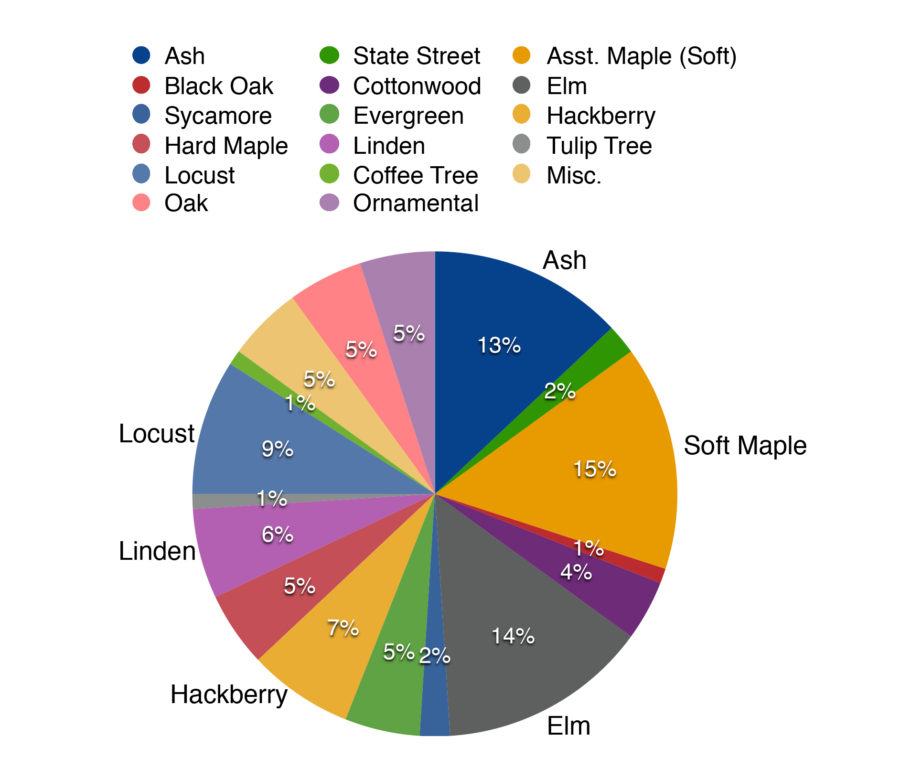
Tree Inventory Shift-Hypothetical Graph
Within this very first recovery step, we’d shrink our exposure to the species under attack and expand our diversity. Then we’d select the next round of 5 trees for the following 3 years and proceed with the same purpose in mind.
It becomes a dedicated 3- year cycle of new introductions, different age classes more diversity and all the community support we can muster. An intentional pace so the new trees are adequately cared for and in turn, the collective success and energy builds upon itself in a strategic way.
This Recovery and Renewal Effort needs all of us in the months and years ahead. It truly is time to come together as neighbors in staking our own personal claim toward this Tribute to our Tomorrows.
If you’re looking to plant new trees or replace an ash in your yard, call us at 402-457-6492 to speak with a #PurplePolo tree expert. And follow us on Facebook and Twitter for tree planting tips.
Exciting! New plants in the garden! But wait....now what? How much water? When? Quick considerations before watering: Sun & Shade - Although most may say that shade gardens need less...
Spring fills us with wonder. Not in the ‘feeling of surprise mingled with admiration, caused by something beautiful’ kind of way. More along the lines of ‘what can I plant in my empty...